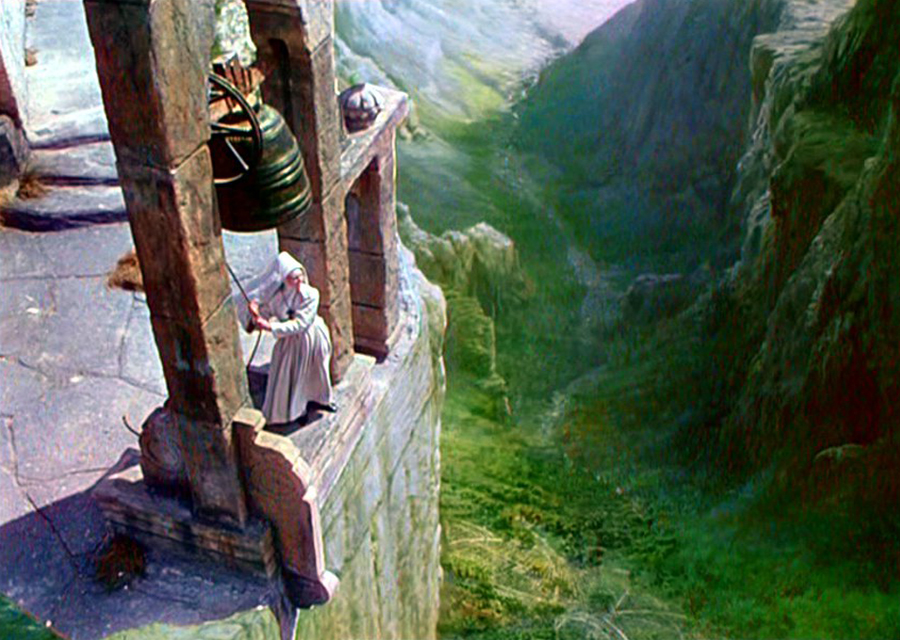
Image credit: Walter Percy Day, Black Narcissus (1947), A production of The Archers, General aFilm Distributors Limited. Backdrop matte painting by Walter Percy Day.
British artist Walter Percy Day was born into a family of craftsmen and trained first as a portrait painter in Tunisia (on the Mediterranean coast of Northwest Africa) before transitioning to cinema in England. As a young man, Day was apprenticed to a photographer cousin and later won a scholarship to the Royal Academy of Art, where he studied until 1905; his graduation was followed by his residency in Tunisia and marriage to his childhood love, with whom he had two sons. Day attempted to enlist in the British army during World War I, but was faced with health complications and became the director of an aircraft factory design department instead. The end of the war also brought change to his professional path. He moved into cinematography in 1919 and became integral to the visual effects team at Ideal Films in Borehamwood (England). Here his triple background in fine arts, design, and photography merged and innovated the film world and his own craft. Day’s use of glass shots allowed directors to reimagine the way they could portray visuals. On the verge of the second World War, Day began collaborating with his sons to create noteworthy and remarkable special effects in films such as the Thief of Bagdad (1940). This collaboration earned him the affectionate art world nickname Poppa Day. During his lifetime, his illustrious and prolific career included credits in The Three Musketeers (1932), Moscow Nights (1935), A Tale of Two Cities (1935), Oliver Twist (1948), and Black Narcissus (1947), which has been called the “best British film of all time.” However, according to his granddaughter Susan Day, her grandfather would have been dismissive of these film accomplishments if he’d known about their posthumous acclaim, and would prefer to be remembered and celebrated for what he was at heart – a painter.
